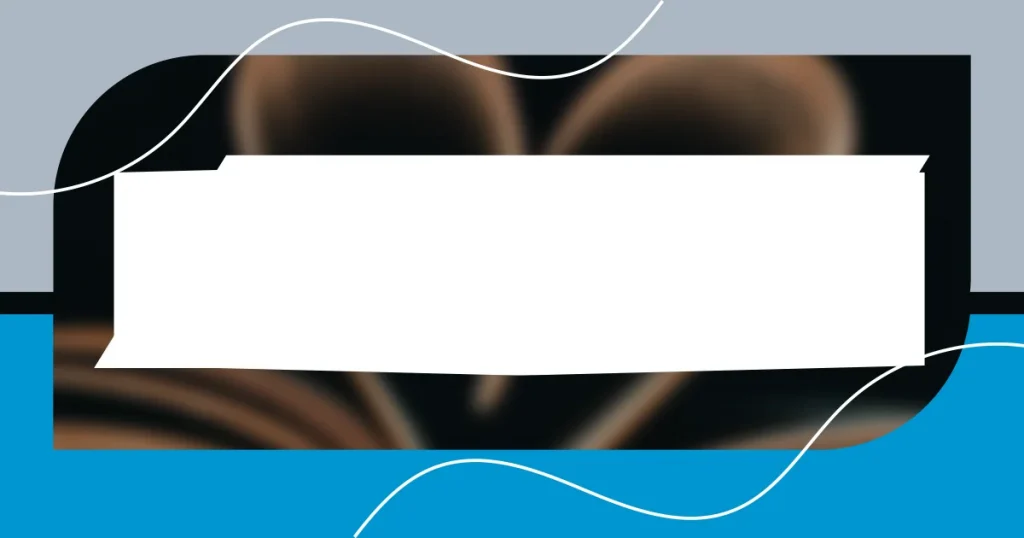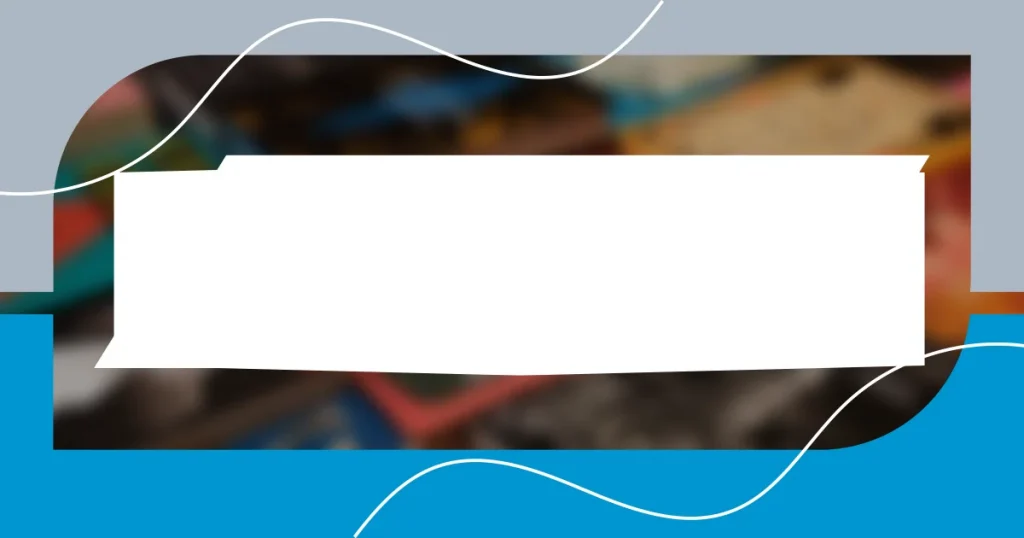Key takeaways:
- Graphic novels uniquely blend visual art and storytelling, enhancing emotional resonance and accessibility of complex themes.
- Criteria for selecting graphic novels include emotional connection, artistic style, and the exploration of relevant themes, such as identity and social issues.
- Recommendations for new readers highlight titles like “Persepolis” and “Saga” for their relatable narratives and profound emotional impact.

Overview of graphic novels
Graphic novels are a unique blend of visual art and storytelling, offering a medium that can convey complex themes and emotions in an accessible format. I remember the first time I picked up a graphic novel; it was like opening a door to a new world where art and literature danced together seamlessly. Have you ever felt that thrill of discovering a story that hooked you from the very first panel?
What stands out to me is how graphic novels can communicate in ways traditional books sometimes struggle to. The interplay of images and words creates a rhythm that pulls you in, allowing you to experience a narrative viscerally. For instance, in a well-crafted graphic novel, a single illustration can evoke a profound sense of loss or joy, often more powerfully than words alone could.
Moreover, the variety within the genre is remarkable, ranging from fantasy and memoir to political commentary and historical fiction. Every time I explore a new graphic novel, I find myself in awe of how diverse stories can be told, often shedding light on topics that might otherwise remain in the shadows. Isn’t it fascinating how something as simple as a series of illustrations can open up conversations about the human experience?

Criteria for selecting graphic novels
Identifying the right graphic novels for your reading list involves looking at a few crucial elements. For me, one of the most important criteria is the story’s emotional resonance. I recall picking up a graphic novel that tackled themes of identity and belonging. The way the characters’ struggles were illustrated made their journeys feel all too real, and I felt a connection that lingers even now. Have you ever read something that spoke to you on such a personal level? It’s that feeling that often drives my selection process.
Another aspect I consider is the artistic style. The visuals in a graphic novel can enhance the narrative significantly, providing context and depth. I once encountered a book where the illustration style mirrored the chaotic emotions of the narrative, adding another layer to the reading experience. Each stroke of the artist’s brush pulled me deeper into the story. Isn’t it incredible how much influence art has over how we perceive a narrative?
Lastly, I often look at the themes and subject matter. Graphic novels can be a powerful medium for exploring social issues. I remember reading one that addressed mental health in a compassionate manner, helping to destigmatize the conversation while providing a relatable and engaging story. Don’t you think that the ability to spark dialogue about such important topics makes graphic novels even more appealing?
| Criteria | Description |
|---|---|
| Emotional Resonance | The ability of a story to connect with the reader on a personal level. |
| Artistic Style | The visual presentation that complements and enhances the narrative. |
| Themes and Subject Matter | The relevance and impact of the topics explored within the graphic novel. |

My favorite graphic novels list
Reflecting on my favorite graphic novels, I’ve realized that each one has left a distinct mark on my reading journey. There’s something undeniably captivating about diving into different worlds through beautifully illustrated panels. For instance, when I picked up Maus by Art Spiegelman, the blend of memoir and history brought a haunting depth to the Holocaust narrative that I had never encountered before. It made me feel the weight of history in a way that felt immediate and personal.
Here’s a list of some of my all-time favorites and what makes them special to me:
- Sandman by Neil Gaiman: The storytelling is rich and complex, weaving mythology and fantasy into a grand narrative that’s both entertaining and profound.
- Persepolis by Marjane Satrapi: This memoir in graphic form captures the struggles of growing up during the Islamic Revolution, offering an intimate perspective that resonates with anyone grappling with identity.
- Saga by Brian K. Vaughan and Fiona Staples: I adore how it fuses science fiction and fantasy while addressing universal themes like love and family, all wrapped in stunning artwork.
- Watchmen by Alan Moore: This graphic novel cleverly deconstructs the concept of superheroes, pushing readers to question morality and the nature of heroism.
- Fun Home by Alison Bechdel: The exploration of family dynamics and sexuality feels raw and honest, encapsulating the complexities of coming to terms with one’s identity.
These graphic novels aren’t just stories to me; they’re experiences that stay with you long after you turn the last page. Each one has challenged my thinking, resonated with my emotions, and pushed the boundaries of what I thought graphic novels could achieve.

Reasons for my favorites
When I think about why these graphic novels resonate so deeply with me, it often comes down to the profound emotions they evoke. I still remember curling up with Fun Home and feeling an overwhelming sense of both sadness and relief as I navigated Alison Bechdel’s journey. It painted such a vivid picture of familial love juxtaposed with loss. Have you ever found yourself reflecting on your own life through someone else’s story? That’s the magic of graphic novels; they create this intimate space for understanding and empathy.
Another reason for my attachment to these works is the way they challenge conventional storytelling. Take Watchmen, for instance — it wasn’t just a superhero story; it delved into complex questions about morality and power dynamics in society. I remember grappling with the philosophical ideas posed in it long after I flipped the last page. Isn’t it fascinating how a graphic novel can lead you to philosophical debates that linger in your mind?
Lastly, I can’t help but appreciate the unique blend of visual and textual storytelling. In Saga, for example, the vibrant illustrations and imaginative worlds made me feel like I was part of an adventure. There’s something exhilarating about the characters jumping off the pages, and I found myself eagerly flipping through panels to see where the narrative would take me next. Isn’t it remarkable how the art can transform a written story into something that feels so alive?

Recommendations for new readers
When it comes to recommending graphic novels for new readers, I always start with Persepolis. The way Marjane Satrapi captures her childhood during the Islamic Revolution is both heartfelt and enlightening. I remember reading it for the first time and feeling an instant connection to her struggles—it’s amazing how a graphic novel can bridge cultural gaps and ignite empathy.
Another fantastic entry point is Saga. I love how Brian K. Vaughan and Fiona Staples blend genres and create relatable characters. The story feels like an epic voyage, and I found myself swept away in a world that felt both foreign and familiar. You know that feeling when you burst into laughter or unexpected tears while reading? That’s the kind of emotional rollercoaster this graphic novel provides, making it perfect for those just starting their reading journey.
For anyone seeking a deeper dive, I would suggest trying Fun Home. It not only tackles themes of identity and family but also does so with such authenticity that it resonates universally. Honestly, as I turned each page, I couldn’t help but reflect on my own relationships and experiences. Have you ever read something that just hit too close to home? That’s the beauty of graphic novels—they can spark personal reflection while engaging you through their compelling visuals and narratives.
















